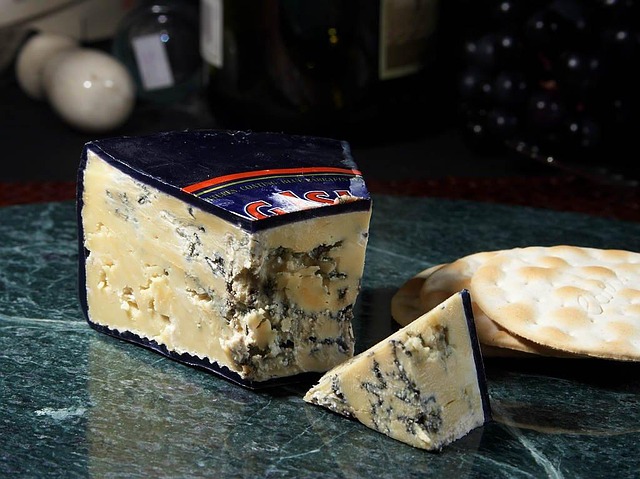Grout sealing is critical for preventing mold, mildew, and stains in high-moisture areas like bathrooms and kitchens. Its porous nature makes it susceptible to moisture absorption, creating an ideal environment for fungi growth. Effective sealing creates a protective barrier against water and spores, preserving grout aesthetics and longevity. Key strategies include choosing the right sealant (e.g., silane or silicone based), proper application, regular maintenance, and addressing leaks promptly. Regular inspections are vital, as overlooking grout issues can lead to costly repairs. Advanced sealing treatments in high-risk areas provide comprehensive protection against mold and stains, enhancing indoor air quality and visual appeal.
Grout, an essential component of tile installations, can fall victim to mold and mildew if not properly maintained. Understanding the vulnerabilities of grout in damp environments is crucial for homeowners and professionals alike. This article delves into effective strategies for grout sealing to prevent molds and stains, addressing key factors like moisture control, common causes of infestations, and the best practices for long-lasting protection. By following these guidelines, you can safeguard your grout, ensuring a clean and healthy living space.
Understanding Grout and Its Vulnerability to Mold

Grout, a material used to fill gaps between tiles in walls, floors, or showers, is inherently porous, making it susceptible to mold and mildew growth if not properly maintained. Its tiny openings can trap moisture, creating the perfect environment for fungi to flourish. This vulnerability is exacerbated by areas with high humidity, inadequate ventilation, or leaks, which can leave grout damp for extended periods.
While grout itself doesn’t contribute to mold in terms of food sources, its porous nature allows mold spores to adhere and proliferate. What’s more, once established, mold can penetrate the grout, leading not only to unsightly stains but also to structural damage over time. Thus, effective grout sealing becomes paramount in preventing mold and stains, ensuring these spaces remain clean, safe, and aesthetically pleasing.
The Impact of Moisture on Grout and Mold Growth

Moisture plays a pivotal role in the development of mold within grout, making it essential to understand its impact for effective prevention strategies. Grout, by nature, is porous and tends to absorb moisture from its surroundings, especially in areas with high humidity or water sources nearby. This moisture acts as a breeding ground for mold spores, which can quickly colonize the tiny crevices of grout, leading to unsightly stains and potential health hazards. The organic compounds present in grout provide an ideal nutrient source for mold growth, further exacerbating the issue.
Grout sealing is therefore a crucial step in preventing mold and stain formation. Sealing products create a protective barrier, filling the pores and blocking moisture absorption. This not only hinders mold growth but also preserves the grout’s aesthetic appeal and longevity. By choosing grout with enhanced water resistance properties or applying specialized sealing treatments, homeowners and professionals can significantly reduce the chances of mold development, ensuring a cleaner and healthier environment.
Common Causes of Grout Staining and Mold Infestations

Grout, often overlooked, can be a breeding ground for mold and mildew if left unaddressed. Common causes of grout staining and subsequent mold infestations include high humidity levels, poor ventilation, and lack of proper sealing. Moisture, crucial for mold growth, can infiltrate grout lines due to leaks or condensation, leading to unsightly stains and potential health hazards.
Sealing grout effectively is a proactive measure in mold prevention. Grout sealing products create a protective barrier, hindering moisture absorption and blocking spore penetration. This simple step not only preserves the grout’s aesthetic appeal but also ensures long-lasting cleanliness and hygiene, making it an essential part of any bathroom or kitchen renovation or maintenance routine.
Benefits of Sealing Grout for Long-Lasting Protection

Sealing grout is an essential step in maintaining a mold-free and aesthetically pleasing bathroom or kitchen. When left unsealed, grout can become a breeding ground for mold and bacteria due to its porous nature, which allows moisture penetration. By applying a high-quality grout sealer, you create a protective barrier that repels water and prevents the growth of unwanted organisms. This simple yet effective method offers long-lasting protection, ensuring your grout stays fresh and clean for years to come.
Not only does sealing grout enhance its longevity, but it also preserves the overall look of your tiles. Sealed grout prevents unsightly stains from dirt, grease, and other debris, making cleaning a breeze. This is particularly beneficial in high-traffic areas where grout can quickly become discolored. With proper sealing, you’ll save time and effort on maintenance, allowing you to focus on enjoying your space rather than constantly fighting stains and mold.
Choosing the Right Sealant for Optimal Results

When it comes to grout sealing for optimal results in mold prevention, choosing the right product is paramount. Grout sealing isn’t a one-size-fits-all solution; different sealants cater to various types of grout and specific environmental conditions. For instance, silane-based sealants are highly effective in preventing mold growth due to their deep penetration into porous materials. These are ideal for kitchens and bathrooms where moisture levels are high. On the other hand, silicone-based sealants offer excellent resistance against stains, making them suitable for areas prone to regular cleaning and exposure to chemicals like those found in cleaning products.
Understanding your grout’s composition and the typical conditions in your space will guide you in selecting a sealant that provides comprehensive protection. Many high-quality grout sealing products combine mold inhibition and stain resistance properties, ensuring long-lasting protection against both issues for your grout. Remember, proper application is also key to success; follow manufacturer instructions closely to guarantee an effective grout sealing job that keeps your spaces looking fresh and healthy.
Application Techniques for Effective Grout Sealing

Effective grout sealing is a powerful tool in the battle against mold and stains. The application techniques for achieving this can vary depending on the type of grout and surface. One common method involves using a caulk gun to apply a silicon-based sealant directly onto the grout lines. This sealant creates a protective barrier, preventing moisture from seeping into the tiny crevices where mold thrives. It’s crucial to ensure complete coverage, filling every nook and cranny, for maximum protection.
For more complex or challenging surfaces, specialized tools and products can enhance sealing performance. These might include grout brushes designed to apply sealant evenly, or spray-on options that offer rapid coverage. Using these techniques, homeowners and professionals alike can achieve a seamless finish, ensuring the grout remains protected against mold, mildew, and unsightly stains for an extended period.
Maintenance Tips to Keep Grout and Surfaces Safe

Regular maintenance is key to keeping grout and surfaces safe from mold and stains. One effective practice is frequent cleaning with a mixture of water and mild detergent, followed by thorough rinsing. This removes surface dirt and prevents the accumulation of moisture, which is crucial as mold thrives in damp environments. Additionally, consider using grout sealing products designed to prevent mold growth and protect against staining. These sealers create a protective barrier, making it easier to wipe away any residual dirt or moisture.
Another maintenance tip involves staying vigilant with repairs. If you notice damaged or chipped grout, address these issues promptly to avoid water seepage. Regular inspection allows for early detection of potential problems, ensuring that minor issues don’t turn into major mold and stain concerns. Additionally, maintaining proper ventilation in areas prone to high humidity can significantly reduce moisture levels, creating an unwelcoming environment for mold growth.
Common Mistakes to Avoid in Grout Mold Prevention

Many homeowners make the mistake of ignoring grout, assuming it doesn’t require much care beyond regular cleaning. However, this can lead to a breeding ground for mold and mildew, especially in humid environments. One of the most effective ways to prevent this is by applying grout sealing products. These sealants create an impenetrable barrier, blocking out moisture and preventing the growth of fungus.
Another common error is not addressing grout issues promptly when stains or signs of damage appear. Small problems can often be easily fixed with a simple cleaning solution, but if left unchecked, they can escalate into larger, more costly repairs. Regularly inspecting your grout and sealing it as needed is an excellent way to maintain the aesthetic appeal and longevity of your tiles, ensuring that your grout remains free from mold and stains.
Advanced Solutions for High-Risk Areas

In high-risk areas prone to moisture accumulation, advanced solutions like grout sealing are essential for grout sealing to prevent mold and stains. This involves applying specialized coatings or sealants that create a protective barrier against water intrusion and humidity. Such treatments not only deter the growth of mold but also shield against unsightly stains caused by algae and other contaminants.
For optimal results, focus on areas with frequent water exposure, such as bathrooms and kitchens. Professionally applied grout sealing products can withstand high moisture levels and prevent the seepage of water into the porous grout, thereby reducing the chances of microbial growth. This proactive approach ensures not only a cleaner, more aesthetically pleasing space but also contributes to a healthier living environment by minimizing the risk of respiratory issues associated with mold exposure.
